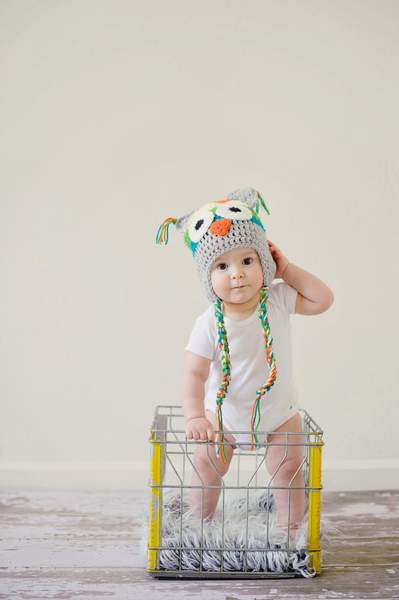As a parent, one of the most critical things on your mind, I’m guessing should be your child’s wellbeing which in the case of an infant includes making sure your child takes his or her first steps at the right age.
To some parents, this is where baby walkers come in, although safety first is the watchword, which goes without saying that when your child is learning to walk, baby standing walkers help the child to stay safe during this learning process.

Table of Contents
What are Baby Walkers with Big Wheels?
These are mobile seats for infants hanging from frames that empower infants to sit up but in a standing position with their feet touching the floor; they have big wheels underneath which aid mobility on various surfaces, alongside a broad base and a tray table in front which keeps them from falling over.
It is used for infants that cannot walk on their own to aid movement.
Its use is observed in infants between the ages of 4 to 10 months old. Read about the Vtech Baby walker review here.
Use of a Big Wheel Baby Walker
Walker allows babies to toddle about, keeping them upright and averting them from falling over while they explore every part of their environment.
Baby walkers have adjustable heights, which aid modification of the walker to the baby’s height. The big wheels are great on all floor types and carpets so your baby can safely glide around the house without obstructions.

Babies tend to be very adventurous, and this is bound to worry most parents at various points in the process of parenting, a baby walker helps to reduce parents’ worry, which means a mother can be in the kitchen preparing dinner.
In contrast, her child ventures about the house in the quest for some excitement without her having to worry about the child reaching for the wrong objects due to the tray plate in front of the child, this creates a distance between the child and the objects in his environment. Read about Baby Einstein Walker here.
Features of a Baby Walker with Big Wheels
- Adjustable seats, which are washable and easy to clean
- Activity trays
- Seat pads
- Music and Lights
- Travel systems, due to the fact that they are foldable and easy to assemble
- Big sturdy wheels, at the front and back.
- Height settings for the baby’s comfort
- Some have push buttons for varying types of educational fun and musicals sounds, which keeps the baby excited.
- Safety straps in most baby walkers these days
- Brake pads at the base by the wheels
- Toys
- Baby walkers can serve as an activity center for children, especially extremely colorful ones.
Pros
- It relieves parents and caregivers from having to carry the baby around all the time
- It keeps the baby moving and entertained at all times
- Helps the baby stay upright
- It can be adjusted to the baby’s height
- It can serve as an activity center for the baby.
- It is easy to clean
- It is foldable and easy to dismantle especially for travels
Cons
- These walkers tend to provide a false sense of safety to parents and caregivers regarding infants in their care, thus leading them to deter supervision, which is indeed a big mistake.
- Damages on the baby walker that go unnoticed can cause harm to the baby during use.
- Also, using a walker can delay independent walking for children due to the fact that they can grow extremely dependent on their walkers. They will come to expect a balance every time they take a step. This keeps them from standing upright for longer than 2 secs because they lack the stability to keep them upright.
Final Words
In conclusion, in as much as baby walkers give parents and caregivers an avenue to breathe, the cons sometimes tend to outweigh the pros when unsupervised.
The advice to parents will be to take extra care to enhance the growth and safety of children because a minimal amount of negligence can cause a lot of damage to the child.
FAQs about Baby Walkers with Big Wheels
-
Can you put bigger wheels on a walker?
Yes, you can put bigger wheels on a walker, but ensuring they are compatible with the design is important. Larger wheels can improve maneuverability, especially on uneven surfaces, and reduce the effort needed to push the walker. However, the walker’s stability and your ability to control it should not be compromised. It’s recommended to consult with a healthcare professional or a mobility equipment specialist before making such modifications.
-
Why not use a baby walker with wheels?
Baby walkers with wheels are discouraged because they pose significant safety risks. They can increase the chance of accidents, such as falling down stairs or tipping over. Additionally, they can delay motor and cognitive development, as they limit the opportunity for babies to explore their environment naturally. The American Academy of Pediatrics advises against using wheeled baby walkers and recommends stationary activity centers.
-
Should babies’ feet be flat in a walker?
Yes, the baby’s feet must be flat on the ground when using a baby walker. This ensures that the baby can properly push off and move the walker, aiding in developing proper walking patterns. If the baby’s feet are dangling or only the toes touch the ground, it can lead to improper posture and affect their walking development.
-
What are the disadvantages of using a walker for a baby?
The disadvantages of using a walker for a baby include:
Safety risks: Increased risk of accidents and injuries, such as falling down stairs or tipping over.
Delayed development: There is a potential delay in motor skills and muscle development, as walkers can limit the natural crawling and exploration stages.
Improper posture: This can lead to incorrect walking patterns and posture issues.
False sense of security: Babies might feel more confident than they are capable of, leading to risky situations. -
Can I upsize my wheels?
Yes, you can upsize your wheels, but it requires careful consideration of various factors, such as the wheel well space, suspension setup, and the vehicle’s overall balance. Upsizing the wheels may affect the car’s handling, fuel efficiency, and ride comfort. Maintaining the overall diameter of the wheel and tire combination is crucial to ensure the speedometer’s accuracy and maintain vehicle performance. Consulting a professional is recommended for this modification.
-
Do larger wheels perform better?
Larger wheels can perform better in some aspects but may have drawbacks in others. They can improve handling and stability, offer a more responsive steering feel, and enhance the vehicle’s appearance. However, they can also lead to a harsher ride due to less tire sidewall to absorb road imperfections. Larger wheels can also increase fuel consumption and decrease acceleration due to their added weight. The performance changes depending on the vehicle and the size increase.













